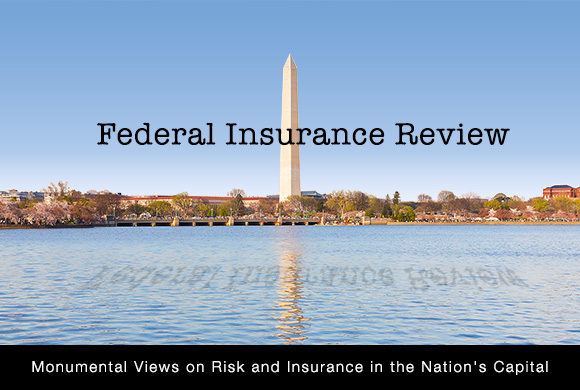A much-anticipated House subcommittee proposal on flood insurance promises to reauthorize the National Flood Insurance Program (NFIP) for five years beyond its September 30 expiration date.
The proposal would introduce reforms to put the NFIP on stronger financial footing; provide aid for those unable to afford coverage; improve flood mapping, mitigation efforts and claims handling; and encourage greater private insurer participation in the market.
Rep. Sean Duffy (R-Wis.), chairman of the House Financial Services Subcommittee on Housing and Insurance, said the draft was being released so that all stakeholders could provide “input into protecting the program integrity of the NFIP.”
The schedule for consideration of this or other flood insurance proposals has not yet been announced.
The far-reaching draft incorporates ideas from Republicans and Democrats, advocates for consumers and taxpayers, as well as ideas from the insurance, banking and real estate industries.
“The ideas stemming from this open process will ensure that everyone who needs flood insurance will have access to it while ensuring that the NFIP does not fall further into debt,” Duffy said, referring to the $24.6 billion the NFIP owes the Treasury.
In late April, U.S. Senators Bill Cassidy (R-La.) and Kristen Gillibrand (D-N.Y.) released their draft legislation reauthorizing the NFIP for 10 years. The Cassidy-Gillibrand legislation addresses flood insurance affordability, coverage limits and solvency issues while encouraging increased mitigation and gradual private sector involvement. It also seeks to strengthen flood mapping and claims handling.
The House measure gives the Federal Emergency Management Agency (FEMA, which administers the flood insurance program, more responsibility and authority for the program’s financial stability and operations.
The House blueprint incorporates several other House proposals dealing with various aspects of the flood program. Key provisions of the Duffy draft include:
Financial Issues
Independent actuarial study. Require FEMA to provide for an annual independent actuarial study of the NFIP to analyze the financial position of the program based on its long-term estimated losses and transmit the results to Congress. Additionally, require FEMA to submit quarterly reports to Congress on the changing policyholder composition and risk profile of the NFIP.
Risk transfer requirement. Require FEMA to use risk transfer tools, such as reinsurance, catastrophe bonds, collateralized reinsurance, resilience bonds, and other insurance-linked securities, to reduce direct taxpayer exposure to insurance losses. (FEMA has already begun buying reinsurance.)
Changes to surcharges. Increase annual surcharges from $25 to $40 for all primary residences; reduce the annual surcharge from $250 to $125 for non-owner occupied residential properties that are currently subject to preferred risk premium rates; and increase the annual surcharge from $250 to $275 for all other non-primary residences.
Reserve funding. Increase the current National Flood Insurance Reserve Fund assessment rate by 1 percent each year until the NFIP achieves its statutorily mandated reserve ratio phase-in requirement of not less than 7.5 percent.
Multiple loss properties. Enhance the managing and tracking of properties with a history of multiple claims by defining a new “multiple-loss property” term to cover all at-risk properties.
Properties with excessive lifetime claims. Prospectively prohibit the availability of NFIP coverage of any multiple-loss property with lifetime losses so excessive that the aggregate amount in claims payments exceeds twice the amount of the replacement value of the structure.
High-risk properties. No longer make available NFIP coverage for certain high-risk properties after January 1, 2021, that have other available private flood insurance options. These would include any new structures added to today’s high-risk special flood hazard areas, as well 1-4 unit residential structures where the replacement cost of the building (exclusive of the real estate upon which the structure is located) exceeds $1 million.
Allowance for Write-Your-Own (WYO) companies. The allowance paid to companies participating in WYO Program shall not be greater than 25 percent of the chargeable premium for such coverage.
Mandatory purchase requirements. Increase the civil money penalties on federally regulated lenders for failure to comply with the NFIP’s mandatory purchase requirements from $2,000 to $5,000.
All-peril policies. Provide for the satisfaction of the NFIP’s mandatory purchase requirement for those properties located in a state that adopts a state-based requirement for mandatory “all-perils” coverage that includes flood insurance.
Additionally, reiterate that nothing in the law prohibits states, localities and private lenders from requiring the purchase of flood insurance coverage for a structure that is located outside of an area designated by FEMA as a special flood hazard area.
Private Market
In terms of encouraging a private flood insurance market the draft includes provisions to clarify that a private carrier policy outside of the NFIP satisfies mandatory purchase requirements and eliminates the restriction that currently prevents insurers participating in the NFIP’s Write Your Own (WYO) Program from also selling private flood insurance policies. It would also open the government’s flood insurance rate making and loss information to insurers and the public. Private policies would be assessed to help pay for flood mapping as NFIP policies are.
It would allow refunds to policyholders who cancel during a policy term in order to obtain a private market policy — just one of the provisions designed to encourage the private insurance market.
Affordability
Rate increase cap. Lowers the cap on annual rate increases from 18 percent to 15 percent and limit the chargeable risk premium of any single family residential property to $10,000 per year.
State affordability program. Authorizes states to voluntarily create a state flood insurance affordability program for eligible owner-occupants of single family 1-4 unit residences who are unable to pay their chargeable risk premium due to family income. Assistance can be in the form of either capping the amount of chargeable risk premium paid, or limiting the amount of premium increase on an annualized basis. The program’s cost would be recouped through an equally distributed surcharge on all other policyholders within that state.
Commercial exemption. Eliminate the NFIP’s mandatory purchase requirement for all commercial properties, while preserving the eligibility of commercial properties voluntarily to purchase NFIP coverage if they so choose.
Replacement cost. Require the FEMA Administrator to incorporate up-to-date replacement cost, by structure, when calculating annual chargeable premium rates, as opposed to the current practice that relies upon a national average.
Coast vs. inland. Require the FEMA, when calculating annual chargeable premium rates, to consider the differences in properties located in local coastal and inland areas.
Mitigation credits. Authorize FEMA to provide policyholders with credits for actions to mitigate the flood risk of their property.
Flood Mapping
Community mapping. Allow localities to elect to use their own resources to develop their own alternatives to NFIP flood maps subject to minimum standards developed by FEMA.
Beyond mapping. Require FEMA to use other risk assessment tools, including risk assessment scores, in addition to applicable flood rate maps when determining annual chargeable premium rates.
Map appeals. Create a new appeals process for states, local governments, or the owners or lessees of real property who want their maps updated.
Mitigation Credits
Community mitigation plans. Require covered flood prone areas to develop a community-specific plan for mitigating continuing flood risks if they have 50 or more repetitive loss structures or 5 or more severe or extreme repetitive loss structures. Communities that fail to develop or make sufficient progress in executing their plan would be subject to certain sanctions.
Community credits. Provide communities that have joined its Community Rating System program with appropriate credits in calculating their annual chargeable premium rates when those communities implement or benefit from measures that protect natural and beneficial floodplain functions.
Property acquisition. Authorize a pilot program to provide financial assistance for states and local communities to purchase properties located in participating communities from eligible low-income owners that have incurred substantial damage from a flood event.
Claims Handling
Fraud penalties. Require FEMA to prohibit false or fraudulent statements connected to the preparation, production, or submission of claims adjustment or engineering reports.
Policyholder appeals. Codify the due process protections for policyholders established after Superstorm Sandy by FEMA for individuals wishing to appeal a full or partial denial of their NFIP claim by their insurance company, and require FEMA to provide policyholders with a written appeal decision that upholds or overturns the decision of the insurer.
Deadline for claims. Require FEMA to make final determinations regarding the approval of a claim for payment or disapproval of the claim within 90 days of the claim being made.
Write Your Own (WYO) company litigation. Provide FEMA with additional authorities and responsibilities for overseeing litigation conducted by WYO insurance companies acting on behalf of the NFIP. Ensure that WYO litigation expenses are reasonable, appropriate, and cost effective. Give FEMA the authority to direct litigation strategy as necessary.
Underpayment of claims. Align penalties for WYO insurance companies that knowingly underpay claims for losses covered to be commensurate with the NFIP’s penalties applicable to overpayment of such claims.
Technical assistance reports. Restrict the use of outside technical reports by WYO insurance companies and the NFIP direct servicing agents.
The draft bill follows some of the recommendations in a flood insurance report by the Government Accountability Office (GAO).
Reinsurers’ Report
On the same day that the House proposal was unveiled, the Reinsurance Association of America (RAA) released a report claiming more private sector involvement in the flood insurance market could save billions in taxpayer dollars.
RAA’s findings are based on a comparative analysis between the NFIP and Florida Citizens Property Insurance Corp., a government-subsidized property insurer that has been following a “depopulation” strategy of having private insurers assume blocks of its business, while also increasing rates and investing in reinsurance.
According to the analysis, if the NFIP took actions similar to Citizens, it could reduce taxpayer exposure by 31 percent and would decrease the additional Treasury financing required to pay losses on floods that have a 1 percent chance of occurring by 91 percent over the next four years.
“Increased competition from the private sector would not only reduce the NFIP’s size and debt, but would ensure that the federal program remains sustainable for years to come,” said Frank Nutter, president of RAA.
Related:
- Better Data, Models Expand Private Flood Insurance Opportunities: Actuaries
- Senate Bill Would Extend National Flood Insurance Program for 10 Years
- National Flood Insurance Program Secures $1 Billion in Reinsurance for 2017; 25 Reinsurers Participate
Topics Carriers Profit Loss Claims Flood Reinsurance Property Market
Was this article valuable?
Here are more articles you may enjoy.



 Many Snowbirds Looking to Pack Up and Fly North For Good; Florida Hit Hard
Many Snowbirds Looking to Pack Up and Fly North For Good; Florida Hit Hard  Cincinnati Financial Finishes Q1 in the Red Due to Catastrophes
Cincinnati Financial Finishes Q1 in the Red Due to Catastrophes  Dog Bite Claims Soar in Frequency and Cost: Report
Dog Bite Claims Soar in Frequency and Cost: Report  Increased Writings in Homeowners Adds to US Surplus Lines Growth
Increased Writings in Homeowners Adds to US Surplus Lines Growth 

